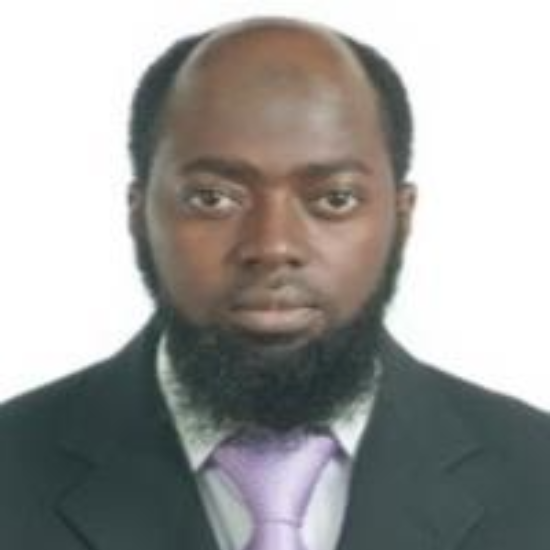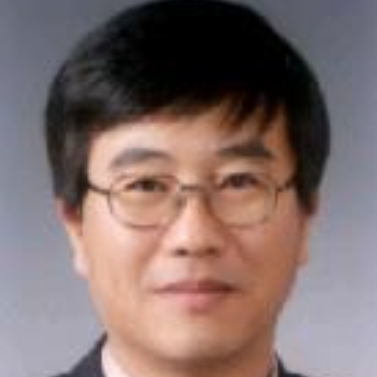International Journal of Wireless and Microwave Technologies (IJWMT)
IJWMT Vol. 6, No. 5, 8 Sep. 2016
Cover page and Table of Contents: PDF (size: 524KB)
A Low-Cost Noise Wave Correlator for Noise Parameters Extraction by Cold Noise Power Measurement
Full Text (PDF, 524KB), PP.10-21
Views: 0 Downloads: 0
Author(s)
Index Terms
6-port network, noise parameters, noise waves, noise correlation matrix, calibration, noise figure analyzer
Abstract
Conventionally, the noise parameters of a Device under Test (DUT) which generally characterize the noise performance of the DUT, are obtained via the impedance tuner technique. The authors have previously presented a technique which eliminates the need for impedance tuner, and rather employs an 8-port network that enables the extraction of the noise correlation matrix of a given DUT and thus its noise parameters. In this paper, we present a further simplification of the 8-port network technique, which also eliminates the need for a conventional external noise source. Cold noise powers emanating from a DUT are measured via a 6-port network with the aid of matched termination. The measured noise powers provide sufficient information for determining the noise wave correlation matrix of a DUT, which are then converted into the conventional 2-port noise parameters. The proposed technique is simple, fast and is verified to give a good estimation of the noise parameters of selected DUTs.
Cite This Paper
Abdul-Rahman Ahmed, Kyung-Whan Yeom,"A Low-Cost Noise Wave Correlator for Noise Parameters Extraction by Cold Noise Power Measurement", International Journal of Wireless and Microwave Technologies(IJWMT), Vol.6, No.5, pp.10-21, 2016. DOI: 10.5815/ijwmt.2016.05.02
Reference
[1]D. Middleton, "Statistical-physical models of Electromagnetic Interference," IEEE Trans. Electromagnetic Compatibility., vol. 19, no. 3, pp. 106–127, Aug. 1977.
[2]H. Rothe and W. Dahlke, "Theory of noisy four poles," Proc. IRE, vol. 44, pp. 811-818; Jun. 1956.
[3]R. Q. Lane, "The determination of device noise parameter," Proc. IEEE, vol. 57, pp. 1461-1462, Aug. 1969.
[4]M. S. Gupta, "Determination of the noise parameters of a linear 2-port," Electron. Lett., vol. 6, no. 17, pp. 543-544, Aug. 1970.
[5]M. Mitama and H. Katoh, "An improved computational method for noise parameter measurement," IEEE Trans. Microw. Theory Tech., vol. 27, no. 6, pp. 612-615, Jun. 1979.
[6]G. Caruso and M. Sannino, "Computer-aided determination of microwave two-port noise parameters," IEEE Trans. Microw. Theory Tech., vol. 26, no. 9, pp. 639-642, Sept. 1978.
[7]G. I. Vasilescu, G. Alquie and M. Krim, "Exact computation of two-port noise parameters," Electron. Lett., vol. 25, no. 4, pp. 292-293, Feb. 1989.
[8]V. Adamian and A. Uhlir, "A novel procedure for receiver noise characterization," IEEE Trans. Instrum. and Meas., vol. 22, no. 2, pp. 181-182, Jun. 1973.
[9]J. Lange, "Noise characterization of linear two ports in terms of invariant parameters," IEEE J. Solid-State Circuits, vol. 2, no. 2, pp. 37-40, Jun. 1967.
[10]J. M. O'Callaghan and J. P. Mondal, "A vector approach for noise parameter fitting and selection of source admittances," IEEE Trans. Microw. Theory Tech, vol. 39, no. 8, pp. 1376-1382, Aug. 1991.
[11]A. C. Davidson, B. W. Bake, and E, Strid, "Accuracy Improvements in microwave noise parameter measurements," IEEE Trans. Microw. Theory Tech., vol. 37, no. 12, pp. 1973-1989, Dec. 1989.
[12]E. W. Strid, "Measurement of losses in noise-matching networks," IEEE Trans. Microw. Theory Tech., vol. 29, pp. 247-252, Mar. 1981.
[13]R. Meys, "A wave approach to the noise properties of linear microwave devices," IEEE Trans. Microw. Theory Tech., vol. 26, no. 1, pp. 34-37, Jan. 1978.
[14]P. Penfield, "Wave representation of amplifier noise," IRE Trans. Circuit Theory, vol. 9, pp. 84-86, Mar. 1962.
[15]S. W. Wedge and D. B. Rutledge, "Wave Techniques for Noise Modeling and Measurement," IEEE Trans. Microw. Theory Tech. vol. 40, no. 11, pp. 2004-2012, Nov. 1992.
[16]R. P. Hecken, "Analysis of linear noisy two-ports using scattering waves,'' IEEE Trans. Microw. Theory Tech. vol. 29, no. 10, pp. 997-1004, Oct. 1981.
[17]N. G. Kanaglekar, R. E. McIntosh, and W. E. Bryant, "Wave analysis of noise in interconnected multiport networks," IEEE Trans. Microw. Theory Tech., vol. 35, no. 2, pp. 112-115, Feb. 1987.
[18]J. A. Dobrowolski, "Noise power sensitivities and noise figure minimization of two-ports with any internal topology," IEEE Trans. Microw. Theory Tech., vol. 39, no. 1, pp. 136-140, Jan. 1991.
[19]S. Withington. "Scattered noise waves in microwave and mm-wave networks," Microwave J., vol. 32, pp. 169-178, Jun. 1989.
[20]S. W. Wedge, Computer-aided design of low noise microwave circuits, Ph.D. dissertation, California Institute of Technology, 1991.
[21]D. B. Rutledge and S. W. Wedge, Microwave six-port noise parameter analyzer: US patent, US 5170126 A,1992
[22]J. A. Dobrowolski. "A CAD-oriented method for noise figure computation of two-ports with any internal topology," IEEE Trans. Microw. Theory Tech., vol. 37, no. 1, pp. 15-20, Jan. 1989.
[23]A. Lázaro, M. C. Maya, and L. Pradell, "Measurement of on-wafer transistor noise parameters without a tuner using unrestricted noise sources," Microwave J., vol. 45, no. 3, pp. 20-46, Mar. 2002.
[24]G. Dambrine, H. Cappy, F. Danneville, and A. Cappy, "A new method for on wafer noise measurement," IEEE Trans. Microwave Theory Tech., vol. 41, no. 3, pp. 375-381, Mar. 1993.
[25]F. Giannini, E. Bourdel, "A New Method to Extract Noise Parameters Based on a Frequency- and Time-Domain Analysis of Noise Power Measurements," IEEE Trans. Microw. Theory Tech. vol. 57, no. 2, pp. 261-267, Feb. 2008.
[26]T. Werling, E. Bourdel, D. Pasquet, and A. Boudiaf, "Determination of wave noise sources using spectral parametric modeling," IEEE Trans. Microw. Theory Tech., vol. 45, no. 12, pp. 2461–2467, Dec. 1997.
[27]G. F. Engen, and C. A. Hoer, "Thru-Reflect-Line: An Improved Technique for Calibrating the Dual Six-Port Automatic Network Analyzer," IEEE Trans. Microw. Theory Tech., vol. 27, no. 12, pp. 987–992, Dec. 1979.
[28]A. -R. Ahmed, K. -W. Yeom, "An extraction of two-port noise parameters from measured noise powers using an extended six-port network", IEEE Trans on Microw. Theory and Tech., vol. 62, no. 10, pp. 2423-2434, Oct. 2014.
[29]H. Hillbrand, P. H. Russer, "An efficient Method for Computer Aided Noise Analysis of Linear Amplifier Networks," IEEE Trans. on Circuits and Systems, vol. 23, no. 4, pp. 235-238, Apr. 1976.
[30]H. Bosma, "On the Theory of Linear Noisy Systems," Philips Res. Repts. Suppl., no. 10, 1967.

